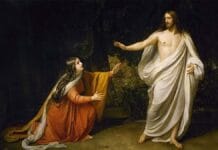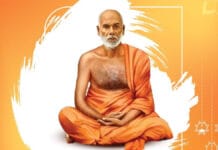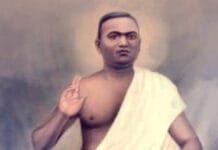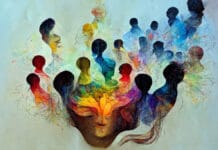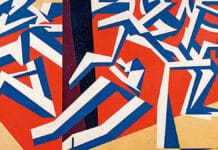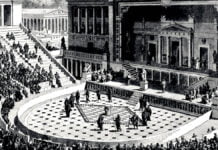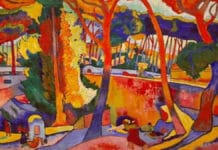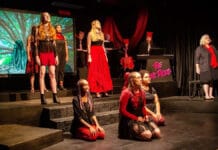Expressionism was an early 20th-century artistic and cultural movement that originated in Germany around 1905 and reached its peak during the 1910s and 1920s. Unlike Impressionism, which focused on capturing external appearances and fleeting light, Expressionism emphasised the subjective inner world of the artist or writer. It aimed to express intense emotions, anxieties, and spiritual crises rather than depict objective reality. Expressionism often presented the world as distorted, exaggerated, or symbolic, reflecting human psychological states.
The movement arose during a period of rapid industrialisation, social unrest, and political turbulence in Europe, particularly in Germany, before the First World War. Artists and intellectuals felt alienated by materialism, urban crowding, and the mechanisation of life. Expressionism became a way to revolt against bourgeois complacency and traditional artistic norms, giving form to feelings of fear, despair, and hope for renewal.
Two major artist groups in Germany shaped the visual origins of Expressionism:
Die Brücke (The Bridge), founded in Dresden in 1905, included artists such as Ernst Ludwig Kirchner and Emil Nolde, who used bold colours and jagged forms to reflect raw emotion.
Der Blaue Reiter (The Blue Rider), formed in Munich in 1911 by Wassily Kandinsky and Franz Marc, focused on spiritual expression through abstraction and symbolic use of colour and form.
Core Principles of Expressionism
Emphasis on Emotion Over Realism
Expressionists distorted forms and colours to convey inner feelings rather than external appearances. A painting of a street might be twisted and nightmarish if that is how the artist felt it.
Distortion and Exaggeration
Shapes, lines, and perspectives were stretched, skewed, or dislocated. In literature, language was often fragmented, abrupt, or heightened to intensify emotion.
Subjectivity
The aim was not to depict the world objectively but to present it as filtered through an individual consciousness, often darkened by anxiety, fear, or spiritual yearning.
Spiritual and Psychological Depth
Expressionism frequently explored questions of human existence, alienation, and mortality. It was often linked to religious or mystical yearnings for transcendence.
Cultural Critique
Many Expressionist works served as social or political critique, exposing the corruption of modern urban life, mechanisation, and the dehumanising effects of war.
Expressionism in Visual Arts
Painters such as Edvard Munch, though earlier, foreshadowed the movement with works like The Scream (1893), a haunting image of existential terror.
Die Brücke artists emphasised raw, primitive vitality, using vivid colour and stark outlines.
Der Blaue Reiter artists leaned towards abstraction, believing that pure colour and form could express spiritual realities. Kandinsky’s Composition VII exemplifies this.
The visual style is marked by angular lines, distorted figures, and intense, often jarring colours, which mirror states of anxiety, ecstasy, or despair.
Expressionism in Literature
Expressionist literature flourished especially in Germany and Austria. Writers abandoned traditional realism to create fragmented, symbolic, and visionary texts.
Themes: alienation, mechanisation of life, critique of modernity, apocalyptic visions, and the search for renewal.
Style: abrupt dialogue, heightened rhetoric, use of allegory and grotesque imagery.
Key Authors
Franz Kafka: His works, such as The Metamorphosis and The Trial, are often associated with Expressionist concerns, though he transcended the label.
Georg Trakl: His poetry is filled with haunting images of decay, death, and spiritual yearning.
August Stramm: His plays and poems used compressed, fractured language to convey intensity.
Playwrights such as Ernst Toller and Georg Kaiser wrote Expressionist drama, marked by archetypal characters, symbolic settings, and themes of revolt against social oppression.
Expressionism in Theatre
Expressionist drama rejected naturalism and realistic stage settings. Instead, it used stark lighting, abstract sets, and symbolic characters (often unnamed figures such as “Man,” “Worker,” or “Father”). Dialogue was fragmented and rhythmic, echoing heightened states of consciousness.
Purpose: to shock audiences, provoke thought, and mirror existential or social crises.
Examples: Toller’s Man and the Masses (1920) and Kaiser’s From Morn to Midnight (1912).
Expressionism in Film
German cinema in the 1920s became one of the strongest vehicles of Expressionism. Directors used stylised sets, exaggerated lighting, and distorted architecture to evoke psychological unease.
The Cabinet of Dr Caligari (1920, directed by Robert Wiene) is the quintessential Expressionist film, characterised by its jagged sets and nightmarish atmosphere.
Metropolis (1927, directed by Fritz Lang) blended Expressionist style with futuristic themes, exploring industrialisation and class struggle.
Nosferatu (1922, directed by F. W. Murnau) exemplified Expressionist horror with its eerie use of light and shadow.
Expressionism in Music
Composers such as Arnold Schoenberg and Alban Berg extended Expressionism into atonality and dissonance, thereby breaking away from classical harmony. Their music reflected tension, anxiety, and the subconscious, paralleling the visual and literary experiments of the movement.
Political and Social Dimensions
Expressionism was intertwined with the turbulence of early 20th-century Europe. The First World War intensified its themes of despair, alienation, and disillusionment. Many Expressionists were politically radical, advocating for social change or spiritual renewal; however, the movement itself encompassed a diverse range of ideological strands.
By the mid-1920s, Expressionism declined, partly due to the rise of Neue Sachlichkeit (New Objectivity), which emphasised realism and social engagement over emotional abstraction. But Expressionism profoundly influenced later movements:
- In literature, it shaped Modernist techniques of fragmentation and interiority.
- In art, it paved the way for Abstract Expressionism in the mid-20th century.
- In cinema, its visual innovations influenced film noir and horror genres worldwide.
Expressionism was not a single unified style but a broad cultural impulse that sought to externalise the inner life of human beings in the face of modernity’s crises. By distorting reality to reveal more profound truths, Expressionism gave form to the anxieties, yearnings, and nightmares of its age. Though short-lived, it transformed the arts and remains a vital reference point for understanding modernist and postmodernist culture.

